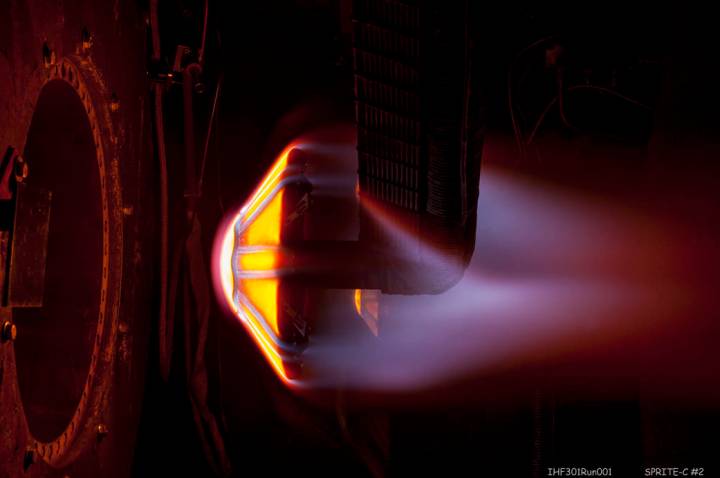
Called Adaptive Deployable Entry and Placement Technology (ADEPT), NASA’s latest tech (according to the agency itself) is essentially a flexible, heat-resistant umbrella. Made using carbon fabric, the engineers manufactured ADEPT to mechanically deploy over a Mars-bound spaceship as it prepares to enter the planet’s atmosphere. Just this week, tests run on the innovative fabric showed it possesses the ability to hold up to conditions incredibly similar to what actually entering the planet would consist of.
During the tests, engineers blasted extremely high-temperature air directly at the front of the heat shield which was attached to a water-cooled support arm. After the surface of ADEPT reached temperatures of around 3,100 degrees Fahrenheit — and produced the mesmerizing, colorful shock wave seen above — NASA declared the test a resounding success. The shield’s resin-infused protective layers perfectly decomposed throughout the experiment, successfully protecting its stitched fabric joints and avoiding degradation.
Aside from simply testing the carbon fabric itself, NASA said it intends to use the data from the trial to verify how certain materials might react to various testing conditions. The information gathered during the initial run also allows the engineers to develop more extensive tests for ADEPT and its configuration, including the possibility for using it on missions it says are “bigger than anything NASA’s ever flown.”
In addition to all of NASA’s recent findings and achievements concerning the red planet, its latest technological innovation with ADEPT brings it even closer to stepping an actual human foot on Mars. Though it likely won’t be a number of years before NASA actually embarks on such a harrowing journey, being the first generation to see someone other than an actor on Mars will be a truly extraordinary feeling.
Editors' Recommendations
- Watch Sierra Space blow up its LIFE habitat in dramatic pressure test
- Perseverance rover collects its first sample from Jezero delta
- How will NASA keep Mars astronauts safe from cosmic radiation? Here’s the plan
- Perseverance rover scoops up a sample from Mars’ Jezero delta
- NASA may have to dig deeper for evidence of life on Mars



